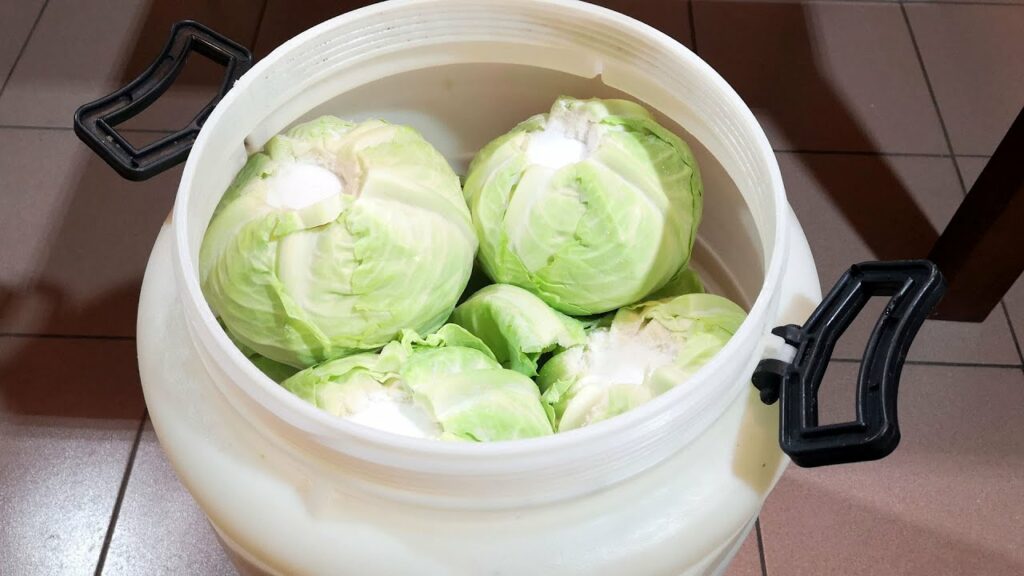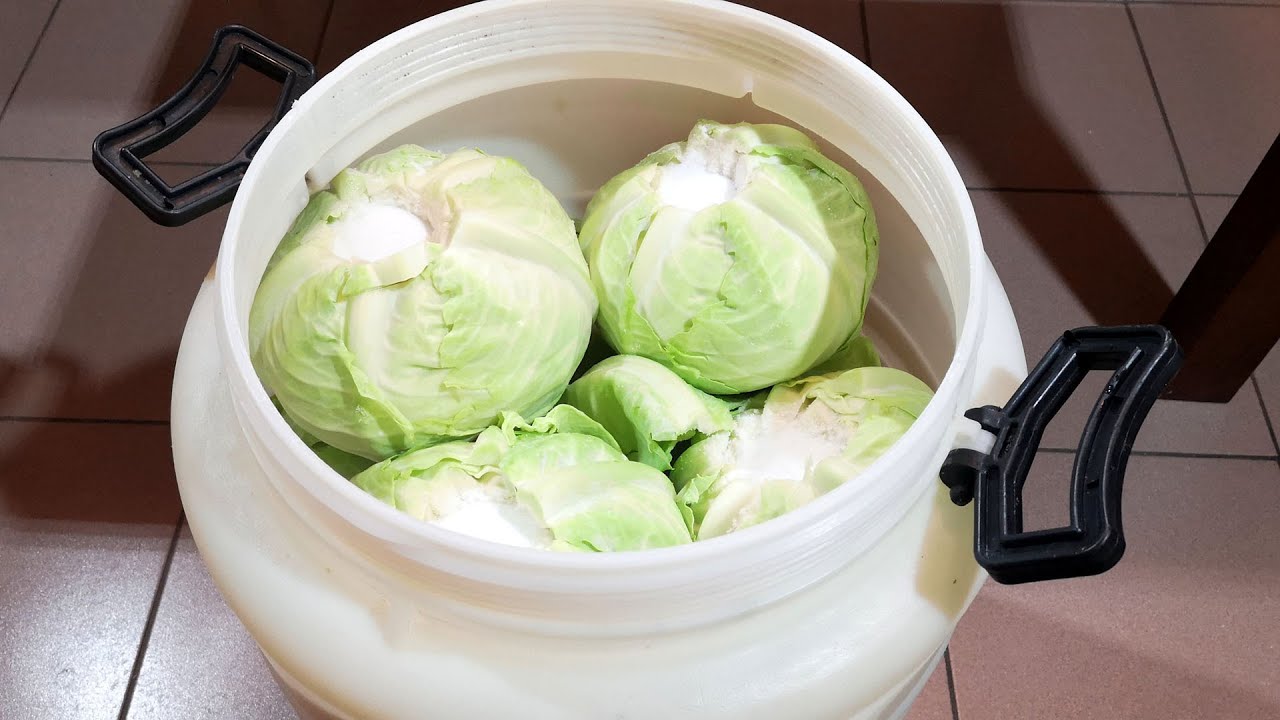
Pickling cabbage is a wonderful way to preserve its crisp texture and tangy flavor, perfect for enjoying as a side dish or adding to your favorite meals. If you want to make pickled cabbage without the hassle of straining, this easy method is for you. It’s straightforward, requires minimal effort, and results in delicious, tangy cabbage that you can enjoy for weeks.
Ingredients:
-
1 medium-sized cabbage (about 2-3 pounds)
-
1 tablespoon of salt (preferably sea salt or pickling salt)
-
1 tablespoon of sugar (optional, to balance the tanginess)
-
2-3 garlic cloves (optional, for extra flavor)
-
1 teaspoon of caraway seeds, mustard seeds, or dill (optional, for seasoning)
-
4 cups of water (filtered or boiled and cooled)
Instructions:
-
Prepare the Cabbage: Remove any damaged or outer leaves from the cabbage. Cut the cabbage into quarters and remove the core. Then, slice the cabbage thinly into shreds or chop it into bite-sized pieces, depending on your preference.
-
Mix with Salt: In a large bowl, combine the cabbage with the salt. Use your hands to mix and massage the salt into the cabbage. This will help draw out the natural juices from the cabbage, creating the brine that will ferment the cabbage without needing to strain it.
-
Optional Flavor Additions: If you’re using garlic or spices, add them to the cabbage now. This will infuse the cabbage with extra flavor as it pickles.
-
Pack the Cabbage: Pack the salted cabbage tightly into a clean glass jar or a pickling crock. As you pack it down, the natural brine will start to rise and cover the cabbage. Make sure the cabbage is fully submerged in its own juices. If needed, you can add a little water to ensure the cabbage is completely covered.
-
Weigh Down the Cabbage: To keep the cabbage submerged and prevent it from floating above the brine, you can use a weight. A clean stone, a small jar filled with water, or a specialized fermentation weight can do the trick.
-
Fermenting: Cover the jar with a lid or a cloth secured with a rubber band to allow air to escape but prevent dust and insects from getting in. Place the jar in a cool, dark place, like a pantry or cupboard. Let it ferment for about 1 to 2 weeks, depending on the temperature and your taste preference. Check it daily to ensure the cabbage stays submerged and to release any gases that may build up.
-
Taste and Store: After about a week, start tasting your pickled cabbage. Once it reaches the desired level of tanginess, it’s ready to eat! Transfer the jar to the refrigerator to slow down the fermentation process and enjoy your pickled cabbage.
Tips:
-
Fermentation Time: The fermentation process can take anywhere from 1 to 2 weeks. The longer you ferment, the tangier your cabbage will be.
-
Avoid Metal: Use glass, ceramic, or food-grade plastic containers for fermenting. Metal containers can react with the salt and acids in the cabbage.
-
Keep it Covered: Always ensure the cabbage is submerged under the brine to prevent mold growth.
This no-strain method for pickling cabbage is not only easy but also preserves the crunchy texture and delicious flavor of cabbage. Enjoy it as a healthy snack, a flavorful side, or as a topping for your favorite dishes!




